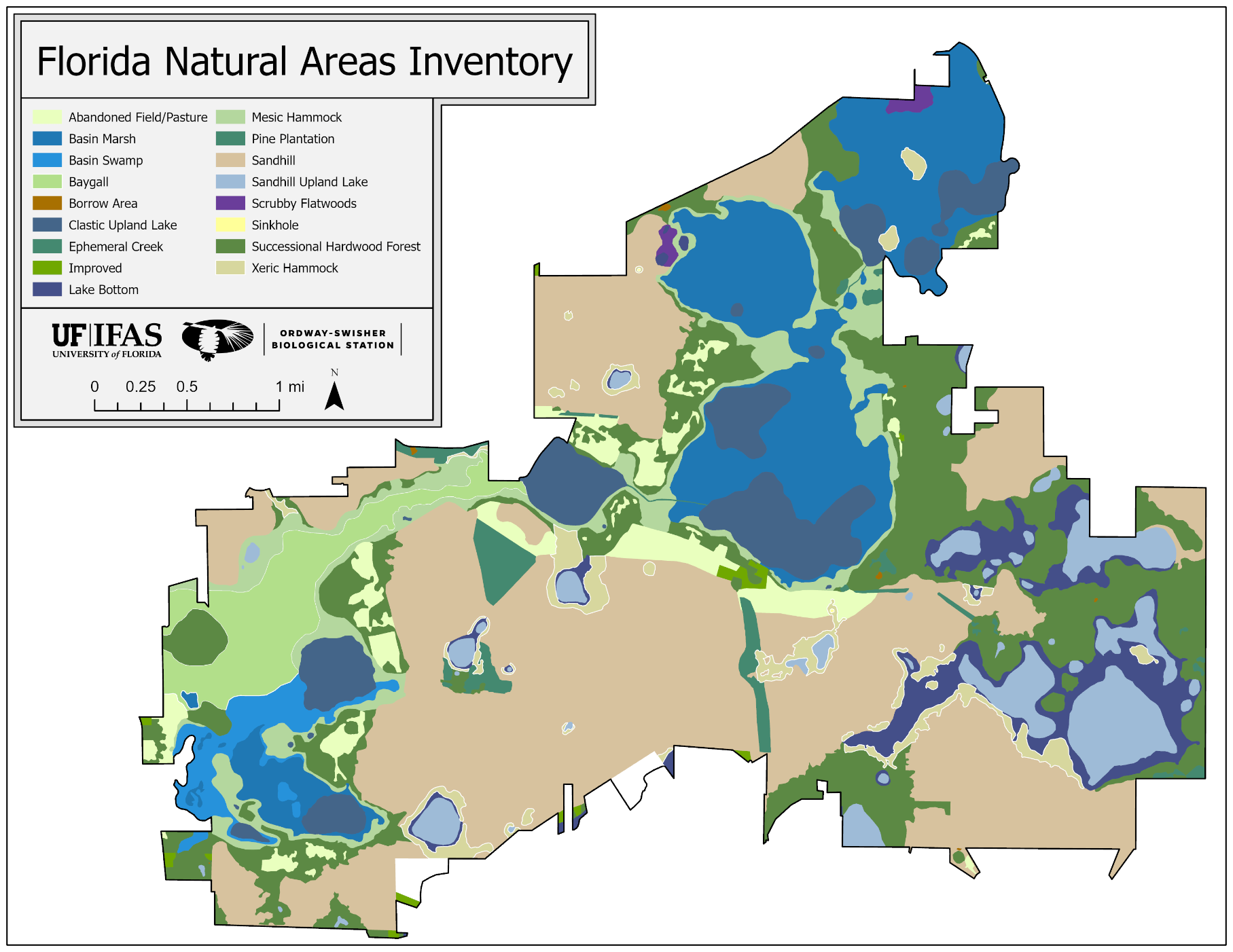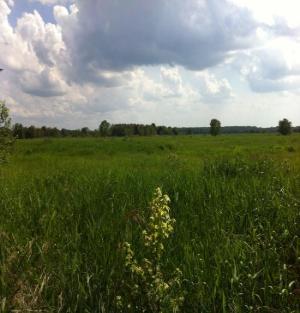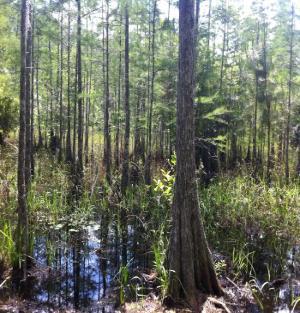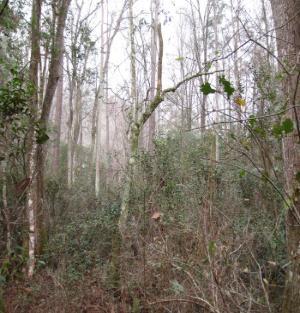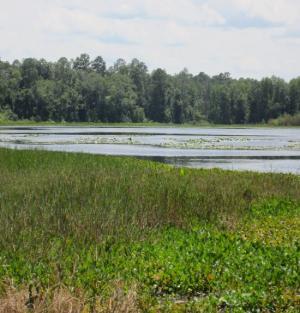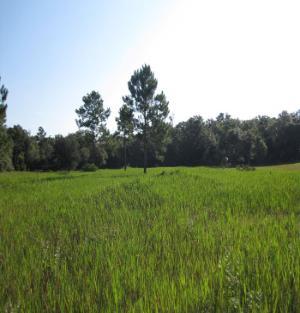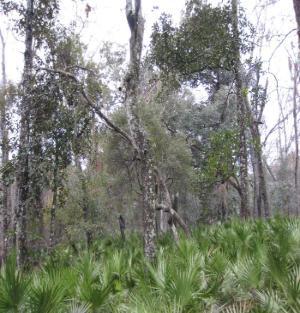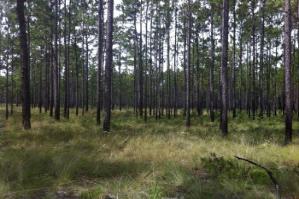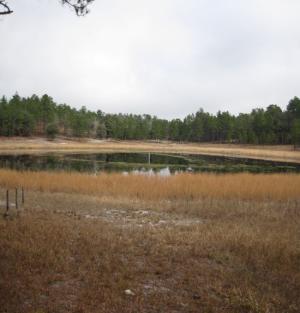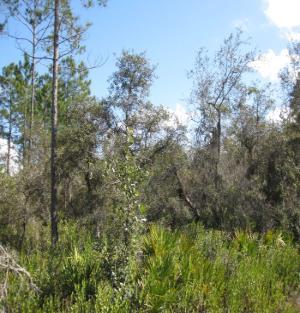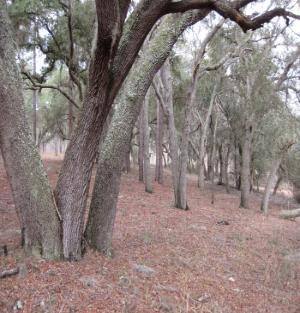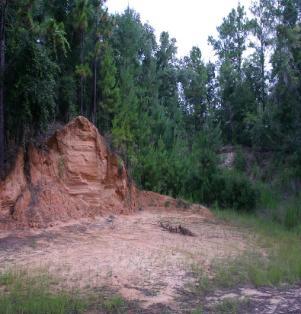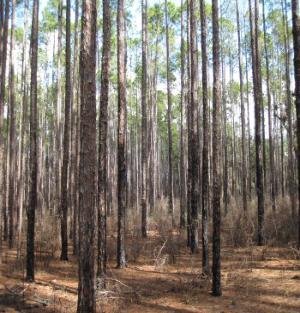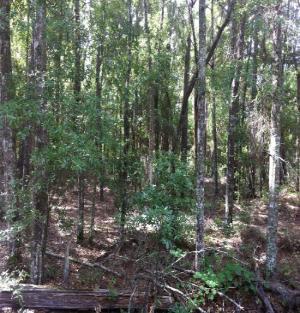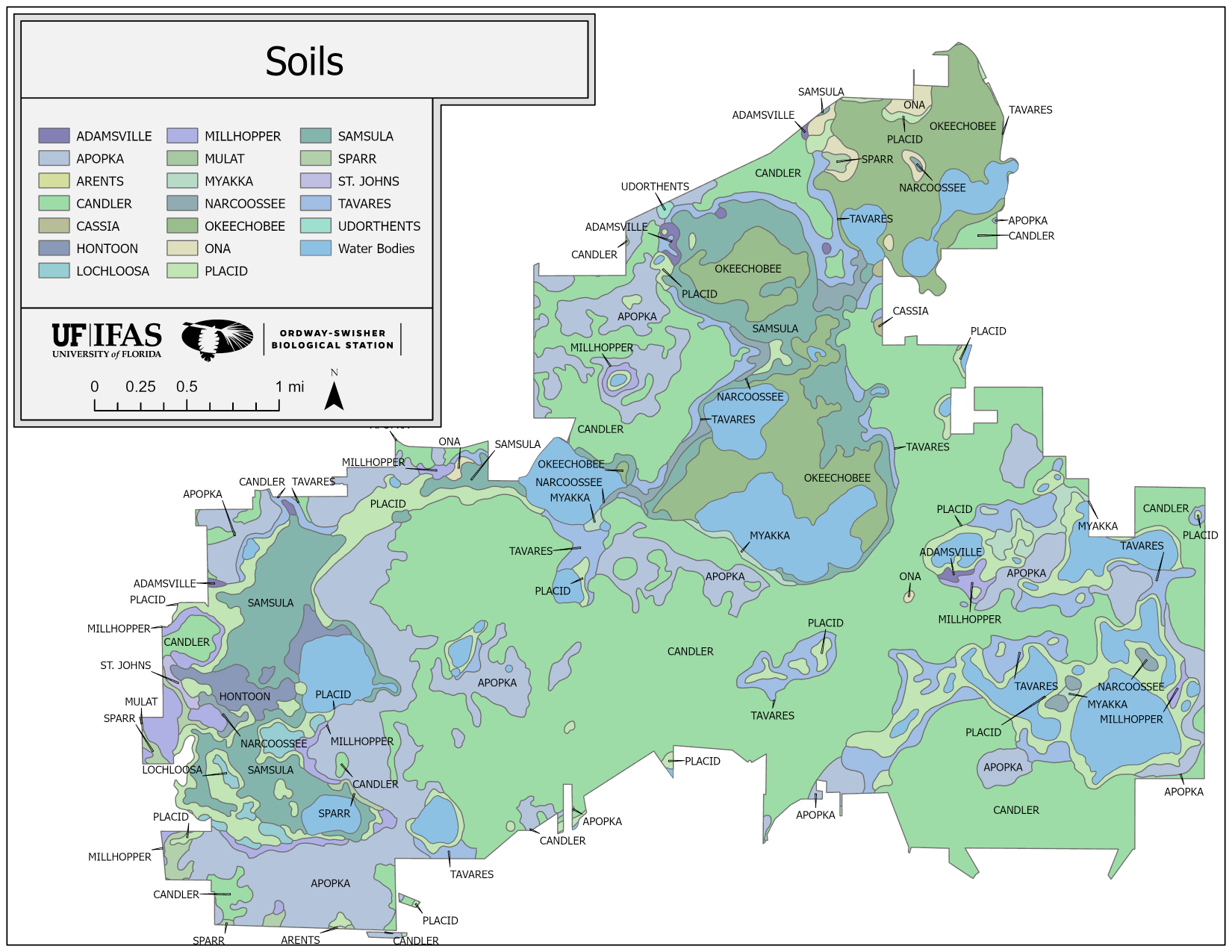The Station lies in the Upper Etonia Creek Basin, which is part of the Lower St. Johns River Basin. Water in the basin generally flows eastward to Etonia Creek. The creek continues eastward to Rice Creek. Rice Creek drains into the St. Johns River, which flows northward to Jacksonville where it empties into the Atlantic Ocean.
The Upper Etonia Creek Basin has three aquifers: the surficial aquifer, the intermediate aquifer and the Floridan Aquifer. The surficial aquifer is more commonly known as the water table. The water table generally conforms to topography but with reduced relief and varies in elevation from approximately 70 to 175 feet above NGVD. The base of the water table is where the Hawthorn Formation lies as an aquiclude. The general flow of this aquifer, on the Station, is to the east and northeast. Recharge for this aquifer is from local precipitation. Most of the residential water in the area is drawn from this source (Motz, et al. 1991 and 1992, Yobbi, et al. 1979).
The intermediate aquifer is composed of pockets of water situated within the Hawthorn Formation. These pockets may or may not be connected and there may be breaks in the soil layers that permit recharge of these pockets from either the surficial aquifer or the Floridan (Motz, et al. 1991 and 1992, Yobbi, et al. 1979).
The top of the Floridan Aquifer is approximately 0 feet NGVD. The potentiometric surface of the Floridan has been measured at 80 in the vicinity of OSBS. By mapping the potentiometric surface of the Floridan, a mound, or potentiometric high, can be seen in the vicinity of the Station. This indicates an area of high recharge for the Floridan Aquifer. Recharge to the Floridan is estimated to be between 0 to 12 inches per year for different areas of OSBS. The Floridan Aquifer is used by industry and agriculture for water needs (Bonoil, et al. 1993, Motz, et al. 1991 and 1992, Yobbi, et al. 1979).
Included in the surficial aquifer are the lakes and ponds of the Station as well as the wetlands. These are divided into two systems within OSBS that are described as the clear water system and the dark water system. The clear water system is composed of the sandhill lakes and ponds that are scattered throughout the property. These are very dynamic wetlands that are dependent on precipitation. As a result, there can be large seasonal fluctuations in water levels. During drought, many of these ponds can and will dry up (Motz, et al. 1991 and 1992, Yobbi, et al. 1979).
The darkwater system flows from the southwestern corner of the Station to the northeastern corner of the property. Water in Lake Rowan flows northward into Lake Suggs and Mill Creek. Mill Creek drains eastward into Ross Lake, which feeds Goose Lake and Ashley Prairie. Water from Ashley Prairie supports Harry Prairie and Putnam Prairie. Putnam Prairie drains eastward through a culvert under Highway 100 into Goodson Prairie. Goodson Prairie supplies water to Etonia Creek.
The darkwater system does not appear to be as dependent on precipitation as the clearwater system, but lake levels will still fluctuate with rainfall. During drought some areas of open water may completely evaporate. During periods of high rainfall a chain of lakes north of OSBS flows into Putnam Prairie.
- Bonoil, D., M. Williams, and D. Munch. 1993. Mapping recharge to the Floridan aquifer unsing a geographic information system. St. Johns River Water Management District, Technical Publication SJ93-5, Palatka, Florida. pp 41.
- Motz, L.H., J.P. Heaney, W.K. Denton, M.S. Fowler, and G. Leiter. 1992. Upper Etoniah Creek Hydrologic Study, Phase II Final Report. St. Johns River Water Management District, Technical Publication SJ92-SP18, Palatka, Florida. pp 414.
- Yobbi, D.K. and G.C. Chappell. 1979. Summary of the Hydrology of the Upper Etonia Creek Basin. Edited by Frank W. Fenzel. Technical Publication SJ79-5. Water Resources Department, St. Johns River Water Management District, Palatka, Florida. pp 89.



